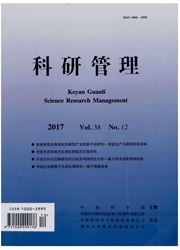

 中文摘要:
中文摘要:
基于经济增长收敛理论,本文建立能源效率随经济收敛而收敛的微观机制模型,并运用中国第二产业1995-2009年的面板数据进行实证检验,认为:随着中国沿海发达地区与内陆欠发达地区第二产业劳均GDP差异的收敛,其第二产业的能源效率差异也在收敛,但该收敛速度较慢;位于正中部的湖北、四川等地作为中国内陆经济增长的龙头,其第二产业能源效率却在与沿海的差距逐渐拉大;这些收敛或发散的主要动力来自于第二产业内部的科技经费投入和人力资本投入的差异。
 英文摘要:
英文摘要:
Based on the theory of economical growth convergence, the model of theoretical energy efficiency convergence mecha- nism is deduced, and the model is tested by using China' s panel data for the secondary industry from the year of 1995 to :2009, it is found that with the GDP per labor difference between coastal and inland areas in the secondary, industry' converges, the ener- gy efficiency difference for the secondary industry between coastal and inland areas is also convergence, although the convergence speed of energy efficiency is slower. It is also concluded that comparing with the coastal areas, the energy efficiency gap for the provinces located right in the middle region of inland area as the engine for inland economic growth gradually becomes larger. The convergence or divergence is mostly driven by the differences of internal S&T investment and human capital investment for sec- ondary industry.
 同期刊论文项目
同期刊论文项目
 同项目期刊论文
同项目期刊论文
 期刊信息
期刊信息
